 March 16, 2017 John E. Ross, KD8IDJ, Editor
| ||||||
We want to hear from you! Tell us what you think of The ARRL Letter.
ARRL Executive Committee to Meet this Month in Denver The ARRL Executive Committee (EC) will meet on March 25 in Denver, Colorado, to tackle a wide-ranging agenda. ARRL President Rick Roderick, K5UR, will chair the session.
The EC also is expected to receive an update on the ARRL's January 12 Petition for Rule Making to allocate a new, secondary amateur band in the vicinity of 5 MHz, while keeping four of the current five 60-meter channels and the 100 W power limit. The FCC designated the League's Petition as RM-11785; comments on the League's petition are due on March 20, and ARRL will file comments to bolster its assertions. The report to the EC also will address noteworthy antenna and RF interference cases.
It would amend the Stafford Act to "expand the categories of essential service providers that may access a disaster site to restore and repair essential services in an emergency or major disaster without being denied or impeded by a federal agency." The EC also will review the status of the Amateur Auxiliary Study Ad Hoc Committee. Meetings have been held with the FCC concerning more effective FCC use of the volunteer resources of the Amateur Auxiliary (Official Observers) program, the current FCC-ARRL Amateur Auxiliary Agreement, and the development of a new Memorandum of Understanding that better incorporates the Amateur Auxiliary program. The Executive Committee is tasked by the ARRL Bylaws to address League matters between regular Board meetings. ARRL Weighs In on New California "Driving While Wireless" Statute ARRL is recommending that Amateur Radio be specifically excluded from a California statute prohibiting the use of "wireless communication devices" while driving. ARRL Southwestern Division Vice Director Marty Woll, N6VI, is taking point on the effort to revise the statute, known by its legislative bill number AB 1785. It was signed into law last September, and it took effect on January 1, amending §23123.5 of the state's Vehicle Code.
Imlay pointed out that that the prior statute excluded Amateur Radio by definition. The new law, which completely replaced the earlier statute, never mentions Amateur Radio, but instead contains an open-ended definition of an "electronic wireless communications device," the operation of which while driving is prohibited. According to the statute, this "includes, but is not limited to, a broadband personal communication device, a specialized mobile radio device, a handheld device or laptop computer with mobile data access, a pager, or a two-way messaging device." "Because of the 'not limited to' language, such a device is whatever a law enforcement officer thinks might be included, and an Amateur Radio operator is not at all protected," Imlay wrote. Such a broad definition could stymie "even the most diligent law enforcement officers," who might interpret the new Vehicle Code language more broadly than intended. "Radio amateurs have regularly used mobile two-way radio systems for the past 70 years," Imlay said. "ARRL is aware of no evidence that such operation contributes to driver inattention," he stressed. "Quite the contrary: Radio amateurs are public service-minded individuals who utilize their radio-equipped motor vehicles to assist others, and they are focused on driving in the execution of that function."
"Given the necessity of unrestricted mobile Amateur Radio communications in order for the benefits of Amateur Radio to the public to continue to be realized, ARRL urges California legislators to reconsider and amend AB 1785, to more narrowly define the class of devices included in the prohibition," or to include a specific exemption for Amateur Radio, Imlay wrote. Read more. International Crystal Manufacturing Going Out of Business International Crystal Manufacturing (ICM) of Oklahoma City has announced that it will be going out of business, probably at the end of May. Royden Freeland Jr., son of the company's founder, posted a letter this week on the ICM website.
International Crystal produces RF control devices -- quartz crystals, oscillators, QCM crystals, filters, TCXOs/VCTCXOs, and precision crystals. Royden R. Freeland Sr. founded International Crystal in 1950, at first operating out of his garage. One of his first contracts was to produce crystals for Collins Radio. The elder Freeland and his wife died in a 1978 air crash, and his son took over the company, which expanded into the production of other electronics in the 1980s.
The announcement caught some manufacturers off guard, and they are seeking to source the products they had been buying from ICM, one of the remaining US-based manufacturers of crystal products. Radio amateurs requiring crystals for projects or as replacement parts for older equipment also will have to look elsewhere. Read more. The Doctor Will See You Now! "Remote Antenna Tuners" is the topic of the just-released episode of the "ARRL The Doctor is In" podcast. Listen...and learn!
Every 2 weeks, your host, QST Editor-in-Chief Steve Ford, WB8IMY, and the Doctor himself, Joel Hallas, W1ZR, will discuss a broad range of technical topics. You can also e-mail your questions to [email protected], and the Doctor may answer them in a future podcast. Enjoy "ARRL The Doctor is In" on Apple iTunes, or by using your iPhone or iPad podcast app (just search for "ARRL The Doctor is In"). You can also listen online at Blubrry, or at Stitcher (free registration required, or browse the site as a guest) and through the free Stitcher app for iOS, Kindle, or Android devices. If you've never listened to a podcast before, download our beginner's guide. Hams Support Miami Marathon Communications for the 15th Consecutive Year More than 40 South Florida Amateur Radio volunteers supported event and emergency communications on January 29 at the 15th running of the Miami Marathon and Half Marathon. Amateur Radio has been a Operating from a mobile command unit at the finish area, two net control stations (NCS) manage traffic from all of the radio amateurs deployed throughout the course. The command unit offers NCSs immediate access to police, fire, public safety, medical, and race officials. Hams at each of the 23 aid stations along the 26-mile course coordinate communication with aid station captains and public service officials to ensure a rapid and accurate flow of critical information to command, including information on injured runners, medical supply requests, traffic, weather, and other critical situations. Amateur Radio volunteers also are stationed at the course start, finish, course split, medical tent, and SAG wagon, as well as in the lead vehicles. For redundancy and backup, both primary and secondary UHF and VHF repeaters cover the entire course. With hundreds of thousands of spectators on hand to cheer the runners, ham radio has proven consistently to be the most reliable form of emergency communication in the race environment, said Miami Marathon Communications Director Benjamin Nemser, WA4DZS, who is also a Miami-Dade County ARES member.
From the first Miami Marathon in 2003, the event has grown from some 3,000 runners to more than 25,000. Runners in the Miami Marathon raise millions of dollars for a multitude of charities. Athletes with disabilities also compete, as do more than 4,000 middle school youngsters. Read more. -- Thanks to Benjamin Nemser, WA4DZS, Communications Director, Miami Marathon, Miami-Dade County ARES, via the ARRL ARES E-Letter ARISS Moves Closer to Launching New Radio System to Space Station Amateur Radio on the International Space Station (ARISS) reports it has met a major milestone and now is "one giant step" closer to flying its new interoperable radio system to the International Space Station. Eventual plans call for installing a new JVC Kenwood TM-D710GA-based radio system on the station as part of an overall approach that will allow greater interoperability between the Columbus module and the Russian Service Module.
With positive test results in hand, ARISS now can move on to the next step -- fabrication of prototype and flight units. The JSC engineers said the ARISS breadboard power supply was the first hardware to have passed all of the space agency's tests and complimented the ARISS Team on its professional-level hardware development and design. "I was looking to come away with what we needed to move forward," said Banke. "We achieved that." Banke also said he was impressed with the support he and McFadin received from the testing group. Key players on those teams, who are also radio amateurs, told him and McFadin that they find equipment supported by hams earns particularly good marks. ARISS-International Chair Frank Bauer, KA3HDO, thanked Banke and McFadin for spending several days putting the unit through the rigorous battery of NASA and Russian preliminary electrical tests. McFadin credited the level of cooperation and experience within the ARISS Team with the multi-voltage power supply's high marks.
The ARISS radio gear on board the ISS is aging. A February supply vehicle carried a new Ericsson 2-meter handheld radio to replace one that failed a few months ago, disrupting ARISS activities. The VHF radio in the Columbus module was used for school group contacts and for Amateur Radio packet, temporarily shifted to UHF after the VHF radio failure. The newly arrived Ericsson radio will replace the Ericsson UHF radio supporting APRS packet and some school contacts, but Bauer made it clear last month that the new Ericsson transceiver is an interim measure. To help support final fabrication and flight tests of the ARISS interoperable radio system, visit the ARISS website. Contributions are tax deductible. Those contributing at least $100 will receive an ARISS Challenge Coin. New ARRL Repeater Directory is Biggest Ever! With a whopping 31,000+ listings, the new ARRL Repeater Directory® is the most complete printed directory of on-the-air repeaters ever! The 2017-2018 edition (46th edition) has 10,000 more listings than the previous edition, covering repeater systems throughout the US and Canada. Repeater systems are listed by state/province, city, and operating mode. Analog and digital repeater systems are included: FM, FUSION, D-STAR, DMR, NXDN, and P25 systems.
The new ARRL Repeater Directory is available in one size -- 6 × 9 inches -- with a convenient lay-flat spiral binding. Pages of supplemental information include VHF/UHF and microwave band plans, as well as repeater operating practices. For decades, The ARRL Repeater Directory has been an invaluable source for locating repeater frequencies while traveling. New hams often use the Directory to find local activity after purchasing a new handheld radio. And, public service volunteers keep a copy nearby or in their emergency "go kit." The 2017-2018 ARRL Repeater Directory begins shipping in early April. Order from the ARRL Store, or find an ARRL publication dealer; ARRL Item No. 0697, ISBN: 978-1-62595-069-7, $19.95 retail; ARRL member price $17.95. For additional questions or ordering, call 860-594-0355 (toll-free in the US, 888-277-5289). Boy Scouts Announce 2017 JOTA-JOTI Theme Scouting's World Jamboree on the Air/Jamboree on the Internet (JOTA-JOTI) Team has announced the theme for this fall's JOTA-JOTI event: "60 Years Connecting Scouts." The 2017 theme recognizes the event's beginnings in 1957 and commemorates its growth in participation and in the expanding communication channels activated this coming October. In addition to Amateur Radio, those channels include internet-based channels and other internet-based options, including social media, ScoutLink, IRC chat services, Skype, and more.
The JOTA-JOTI logo contest is about to start. Plans for 2017 include a simplified registration system. According to the World JOTA-JOTI Report 2016, more than 1 million Scouters in 156 countries and at 33,000+ locations took part in JOTA-JOTI last fall. The numbers for US participants were 10,700 for JOTA and 560 for JOTI. Wilson said there was a problem integrating those statistics into the final report. Girl Scouts and Guides Get Thinking about Ham Radio Skip Youngberg, K1NKR; Bill Machia, WM3N, and Dudley Allen, KD0NMD, were among those sponsoring World Association of Girl Scouts and Girl Guides' "Thinking Day on the Air" (TDOTA) events in February that enjoyed enthusiastic participation. "Thinking Day," officially February 22, commemorates the birthday of Lord Robert Baden-Powell, the founder of the Scout and Guide movements, as well as that of his wife, Olave, who was the first World Chief Guide.
"Talk about excitement, exhilaration, and satisfaction!" said Youngberg, an ARRL Life Member who got involved in TDOTA through his daughter Jill Galus, KB1SWV. She enlisted his club, the Nashoba Valley Amateur Radio Club (NVARC), to conduct an event in New Hampshire 3 years ago. This year, the NVARC set up in Shirley, Massachusetts, and in Raymond, New Hampshire. TDOTA traces its heritage to Radio Scouter Les Mitchell, G3BHK (SK), who originated Jamboree on The Air (JOTA) in 1957 and initiated TDOTA about 25 years ago, Youngberg said. On February 18 in Shirley, Youngberg and his NVARC compatriots introduced 41 Scouts and 15 leaders to world time, phonetics, Morse code, and -- perhaps most important -- getting on the air. The next day, the NVARC crew packed up and did the same for a similar group in Raymond, where 26 Scouts and 10 leaders "honed their communications experience," Youngberg said. Youngberg said the Shirley gathering snagged 25 contacts, including eight DX stations. The New Hampshire demonstrations managed 42 contacts, 23 of them "CW DX demonstration" contacts made during the ARRL International DX Contest. Youngberg credited the Girl Scout organizers in Massachusetts and New Hampshire with "bravely treading into the unknown," and said they're already talking about TDOTA 2018. In Maryland, Bill Machia, WM3N, got to thinking about getting Girl Scouts involved in ham radio. He wondered if the Amateur Radio community was missing out on an opportunity. "I agreed to give a presentation to the Girl Scouts of Central Maryland on Girl Scout Thinking Day," Machia told ARRL, who focused on generating excitement and interest in ham radio. "As I researched my presentation, I found ARRL had a patch for Girl Scouts, Radio & Wireless Technology. This meant they could go home with an accomplishment patch."
Machia said he never expected the level of interest that developed. When the head count reached 75, Scout leaders decided to make that the limit. "We are probably going to need a second presentation," he said. Machia reached out to Maryland-DC Section Manager Marty Pittinger, KB3MXM, to help, and when the day came, Machia said he found himself before "the most respectful group of young people I had ever met. They even laughed at my bad jokes." "The presentation covered the necessary points needed for their patch," Machia recounted. He and his team presented some electrical and magnetic theory experiments. A local repeater demonstration followed, and they even set up an HF station with its antenna supported on a pole in the auditorium. "The 3 hours flew by," he said, adding that he is now trying to recruit mentors from area clubs to expand interest in Amateur Radio. Boy Scout Troop 231 Assistant Scoutmaster Dudley Allen, KD0NMD, also believes girls need to be given the opportunity to get more involved in ham radio. TDOTA provided one, and members of the Mid-America Council's Radio Scouting Club (KN0BSA) hosted a TDOTA event for Girl Scouts in Bellevue, Nebraska, on February 18.
"This was the first event of this kind hosted for the Girl Scout troops in the area," Allen said. "Seven girls took time out of their Girl Scout cookie sales schedule to stop by the 'shack' and see what it was all about." He had help from other Scout leaders. "Jim Taylor, AJ0R, put girls in contact with Girl Guides in London, England, using EchoLink," Allen said, and he, Ray McNally, N5SEZ, and Terry Gampper, N0BXQ, helped the young ladies contact Georgia and Texas on HF. Derek Winterstien, W0DBW, got on 2 meters so the girls could chat with some of the locals. Overall, Allen said, it was a lot of fun, and Radio Scouting is growing throughout the midwest. Youngberg says that few non-hams understand what Amateur Radio has to offer. "Fortunately, Thinking Day on the Air is what you might call a self-defining special event," he said. "Point the troop to available TDOTA materials, offer support, and engage in a conversation that binds the event to something you and the Girl Scouts can reasonably and successfully accomplish." In Brief...
The K7RA Solar Update Tad Cook, K7RA, Seattle, reports: There have been no sunspots since March 3, except for the one that appeared on March 5. Also, solar flux values have recently dipped below 70 for the first time since the other side of this solar cycle. Solar flux appears at 70 over the past week, but this is an approximation.
Predicted solar flux is 70 and 71 on March 16-17; 72 on March 18-20; 74 on March 21-23; 76 on March 24-25; 74 on March 26-29; 72 on March 30-April 3, and 70 on April 4-9. The predicted planetary A index is 5, 10, and 8 on March 16-18; 5 on March 19-20; 8, 10, 8, and 8 on March 21-24; 5 on March 25-27; 35, 30, 20, 18, 15, 20, and 15 on March 28-April 3, and 12 on April 4-5. Sunspot numbers for March 9 through 15, 2017 were 0, 0, 0, 0, 0, 0, and 0, with a mean of 0. The 10.7-centimeter flux was 71.2, 71, 70, 70.1, 70.3, 69.6, and 69.8, with a mean of 70.3. Estimated planetary A indices were 15, 12, 6, 9, 3, 5, and 7, with a mean of 8.1. Estimated mid-latitude A indices were 10, 14, 4, 7, 2, 3, and 5, with a mean of 6.4. Send me your reports or observations. Just Ahead in Radiosport
See the ARRL Contest Calendar for more information. For in-depth reporting on Amateur Radio contesting, subscribe to The ARRL Contest Update via your ARRL member profile e-mail preferences. Upcoming ARRL Section, State, and Division Conventions
Find conventions and hamfests in your area.
. .
Subscribe to...
Free of charge to ARRL members...
Find ARRL on Facebook! Follow us on Twitter and Instagram! | ||||||
.jpg) The EC will hear a report on FCC and regulatory items. This includes a review of enforcement issues and concerns, as well as a status update on FCC-related items and filings and on open items that have not received any FCC action since the January Board of Directors meeting. One FCC-related matter that is likely to come up for discussion is the status of the ARRL Petition for Rule Making (
The EC will hear a report on FCC and regulatory items. This includes a review of enforcement issues and concerns, as well as a status update on FCC-related items and filings and on open items that have not received any FCC action since the January Board of Directors meeting. One FCC-related matter that is likely to come up for discussion is the status of the ARRL Petition for Rule Making (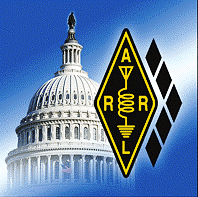 On the legislative front, the EC will get a status report on the Amateur Radio Parity Act of 2017 (H.R. 555). The bill has passed the US House, with Senate action still pending. The EC also will discuss the Amateur Radio implications of
On the legislative front, the EC will get a status report on the Amateur Radio Parity Act of 2017 (H.R. 555). The bill has passed the US House, with Senate action still pending. The EC also will discuss the Amateur Radio implications of  "ARRL has received a huge volume of inquiries and complaints about this statute in particular, since its enactment," ARRL General Counsel Chris Imlay, W3KD, wrote in a letter to Woll to provide guidance in amending the California statute. "I would urge that you present this letter at any meetings you have with California State legislators on this topic, thus to bring the issues contained herein to their attention."
"ARRL has received a huge volume of inquiries and complaints about this statute in particular, since its enactment," ARRL General Counsel Chris Imlay, W3KD, wrote in a letter to Woll to provide guidance in amending the California statute. "I would urge that you present this letter at any meetings you have with California State legislators on this topic, thus to bring the issues contained herein to their attention."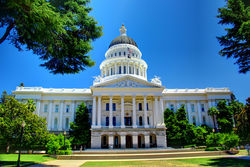 Imlay also cited a 2009 letter to ARRL from the National Safety Council stating that there was no evidence using Amateur Radio while driving is a significant risk.
Imlay also cited a 2009 letter to ARRL from the National Safety Council stating that there was no evidence using Amateur Radio while driving is a significant risk. "We will be honoring all orders that we have already taken and will be able to fill a limited amount of new orders, dependent upon raw materials available," Freeland said. "We would like to thank you for your past business. The success of ICM over the previous 66 years has been largely due to its amazing customer base."
"We will be honoring all orders that we have already taken and will be able to fill a limited amount of new orders, dependent upon raw materials available," Freeland said. "We would like to thank you for your past business. The success of ICM over the previous 66 years has been largely due to its amazing customer base."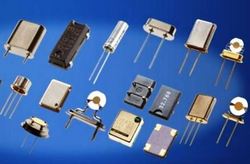 In the 1990s, though, it sold off some of its equipment and distribution business to concentrate on its core enterprise -- the manufacture of crystal and oscillator products.
In the 1990s, though, it sold off some of its equipment and distribution business to concentrate on its core enterprise -- the manufacture of crystal and oscillator products..jpg) Sponsored by
Sponsored by .jpg) critical part of this major international event each year. Depending on their assignments, volunteers report as early as 4:30 AM for the start of the event and may remain in place for up to 9 hours. Many of the hams who turned out this year have volunteered for all or many of the 15 Miami Marathon events.
critical part of this major international event each year. Depending on their assignments, volunteers report as early as 4:30 AM for the start of the event and may remain in place for up to 9 hours. Many of the hams who turned out this year have volunteered for all or many of the 15 Miami Marathon events.(1).jpg)
.jpg) Lou McFadin, W5DID, and Kerry Banke, N6IZW, travelled to NASA Johnson Space Center (JSC) in Houston in mid-February for preliminary testing of Banke's "breadboard" version of the ARISS multi-voltage power supply that's essential to the upgrade. They worked with JSC engineers and Electromagnetic Compatibility (EMC) Lab personnel to put the specially built power supply through its paces, checking against US and Russian space specifications for preliminary power quality and EMC tests.
Lou McFadin, W5DID, and Kerry Banke, N6IZW, travelled to NASA Johnson Space Center (JSC) in Houston in mid-February for preliminary testing of Banke's "breadboard" version of the ARISS multi-voltage power supply that's essential to the upgrade. They worked with JSC engineers and Electromagnetic Compatibility (EMC) Lab personnel to put the specially built power supply through its paces, checking against US and Russian space specifications for preliminary power quality and EMC tests. Now that testing of the breadboard unit has been completed, McFadin can purchase the necessary -- and pricey -- space-certified parts, to fabricate the final prototype and flight power supplies. He and Banke expressed confidence that the prototype and flight units will pass the even more rigorous final testing with flying colors.
Now that testing of the breadboard unit has been completed, McFadin can purchase the necessary -- and pricey -- space-certified parts, to fabricate the final prototype and flight power supplies. He and Banke expressed confidence that the prototype and flight units will pass the even more rigorous final testing with flying colors..JPG) ARRL partner
ARRL partner 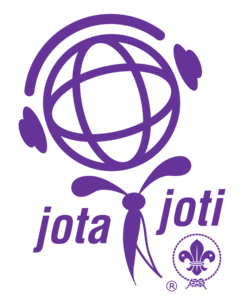 "It also recognizes the goal of the event -- connecting Scouts so that they can engage in conversations with other Scouts across town and around the world," said JOTA Coordinator Jim Wilson, K5ND. "This allows them to discover geographic and cultural differences and similarities. Plus, they are exposed to the technology that makes all this happen."
"It also recognizes the goal of the event -- connecting Scouts so that they can engage in conversations with other Scouts across town and around the world," said JOTA Coordinator Jim Wilson, K5ND. "This allows them to discover geographic and cultural differences and similarities. Plus, they are exposed to the technology that makes all this happen."-5.jpg)
%20Troup2%20N3IMD%20WM3N%20KB3MXM.jpg)
.JPG)
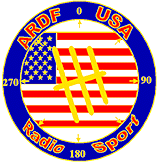 Combined National, IARU Region 2 ARDF Championships Set for this Summer in Ohio: The combined
Combined National, IARU Region 2 ARDF Championships Set for this Summer in Ohio: The combined 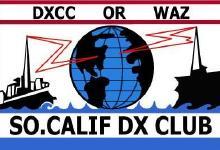 You have DXing Questions? Dr. DX has Answers! The Southern California DX Club (
You have DXing Questions? Dr. DX has Answers! The Southern California DX Club (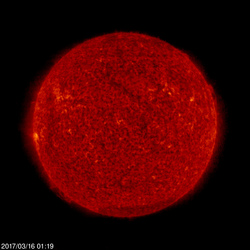 The average daily sunspot number dropped from 14.1 last week to zero. Average daily solar flux went from 74.3 to 70.3. Average daily planetary A Index quieted from 20.9 to 8.1, while the average mid-latitude A index went from 15 to 6.4.
The average daily sunspot number dropped from 14.1 last week to zero. Average daily solar flux went from 74.3 to 70.3. Average daily planetary A Index quieted from 20.9 to 8.1, while the average mid-latitude A index went from 15 to 6.4.







